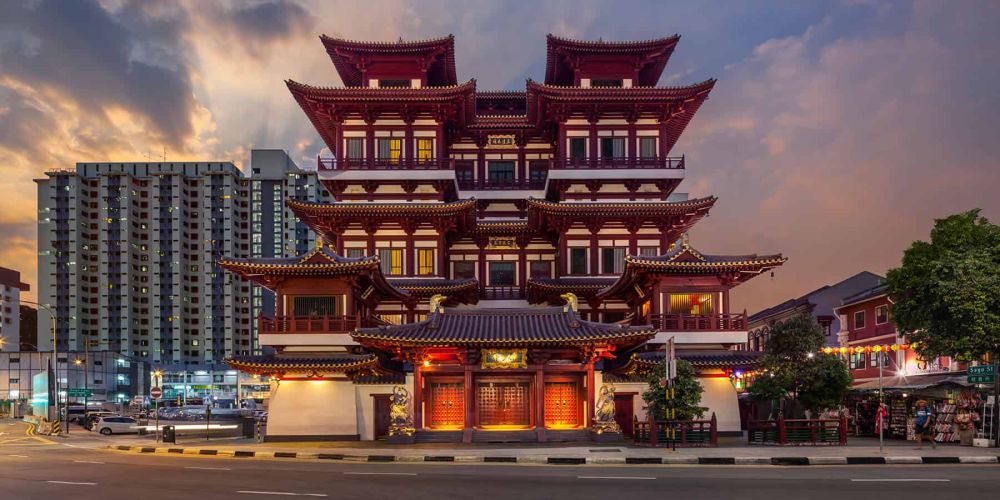

The Buddha Tooth Relic Temple and Museum is a prominent cultural landmark located in the heart of Chinatown, Singapore. Established in 2007, the temple is relatively new compared to other historical sites in Singapore but has quickly become an essential destination for both pilgrims and tourists alike. Built in a style based on the Tang dynasty architecture, the temple houses what is claimed to be the left canine tooth of Buddha, which was recovered from his funeral pyre in Kushinagar, India.
The temple consists of four floors and a basement, each offering a unique aspect of Buddhist art and culture. The first floor is dedicated to the Hundred Dragons Hall and the Universal Wisdom Hall, the second floor features the Buddhist Culture Museum, the third floor hosts the Sacred Light Hall, where the sacred Buddha Tooth Relic is enshrined, and the fourth floor has a rooftop garden with a prayer wheel. The basement holds the dining hall which serves vegetarian meals to visitors.
Visitors to the Buddha Tooth Relic Temple and Museum can experience the rich history of Buddhism, participate in daily ceremonies, and explore an impressive collection of Buddhist artifacts spread across its museum. This spiritual site provides a tranquil escape from the bustling city and offers a glimpse into the religious heritage that influences Singapore's diverse culture.
Tourism in Singapore has evolved significantly since the 1960s when the city-state began developing its tourism industry as part of its economic plan. In the early years, the emphasis was on showcasing its modernity and the ethnic diversity of its population. Landmarks such as Orchard Road, the Merlion, and Sentosa Island were some of the earliest attractions.
During the 1980s and 1990s, Singapore advanced its tourism offerings by opening up new attractions and hosting international events. The opening of the Jurong Bird Park, Singapore Zoo, and the Night Safari helped establish Singapore as a family-friendly destination.
In recent years, the introduction of integrated resorts such as Marina Bay Sands and Resorts World Sentosa, which include casinos, Universal Studios Singapore, and the S.E.A. Aquarium, have further diversified the tourism scene, appealing to a broader audience.
The latest tourism trend in Singapore focuses on creating a sustainable and smart tourism experience. Singapore has begun initiating eco-friendly practices, promoting responsible tourism, and harnessing technology to enhance the visitor experience. With initiatives like the Green Plan 2030, Singapore is working towards becoming a leading destination for green tourism.
Furthermore, in response to the global pandemic, Singapore has been adapting its tourism industry to the new normal by implementing safety measures, and it has been a forerunner in the concept of "travel bubbles" to facilitate safer international travel during these challenging times.
As of now, with its dynamic blend of cultural heritage, modern attractions, and green initiatives, Singapore continues to thrive as a global tourism hotspot attracting millions of visitors each year.